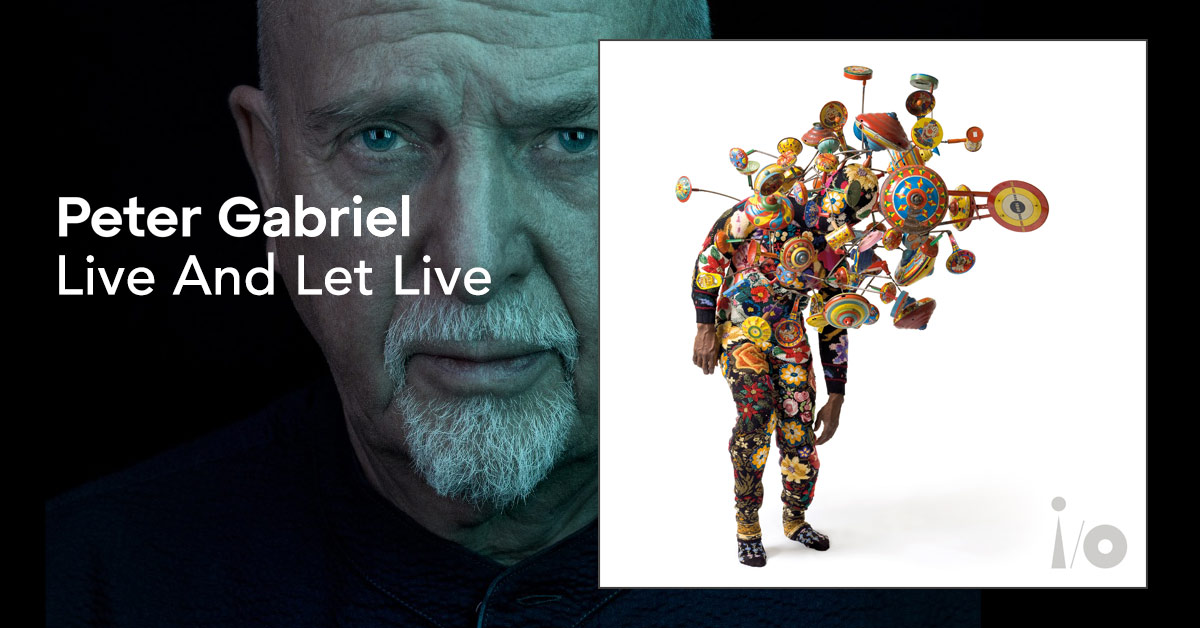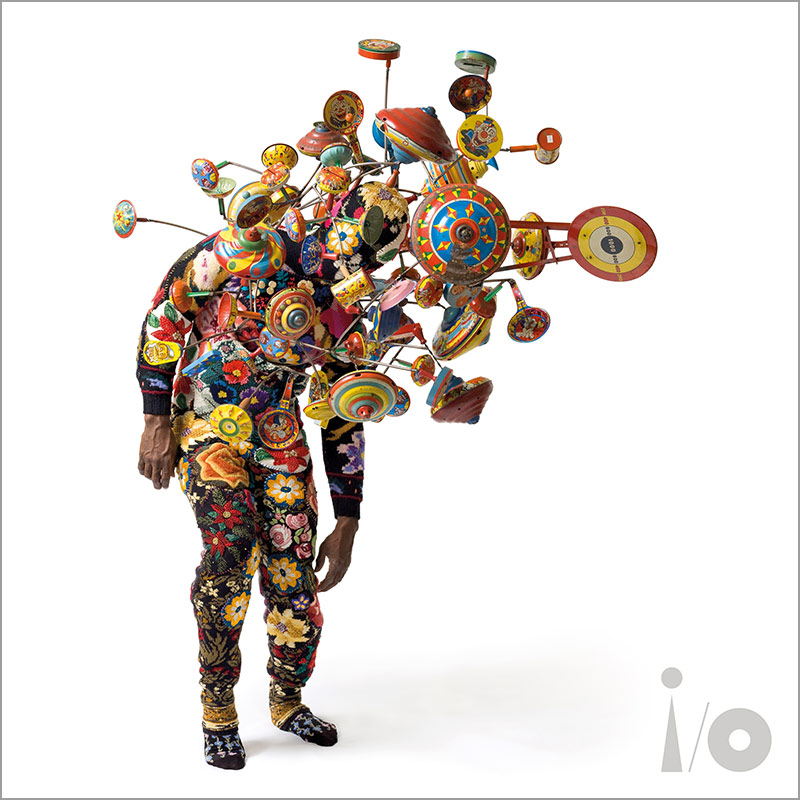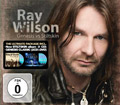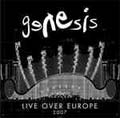


All's well that ends well - or: November brings everything new.
The three main mixes of the last i/o track will all be released on the full moon this time. This also makes sense, as the complete album with all its variants will be released just a few days later. It will be interesting to see what awaits us on the new moon.
Live And Let Live was the last track to be completed for i/o and, like Four Kinds Of Horses, deals with violence and hateful excesses. And like Love Can Heal, it upholds peacefulness and a sense of community.
Gabriel's commitment to The Elders was inspiring - as was Nelson Mandela, who said that after 27 years in prison, it was difficult to have to work with people who had locked him away. But he understood that he would remain their prisoner for the rest of his days if he could not find humanity in them and forgive.
Gabriel himself says that in view of what is currently happening in the world, "to walk around with a bunch of flowers, preaching forgiveness seems trite and pathetic, maybe. But in the long run, I think people have to find a way. 'Peace only happens when you respect the rights of others' is a quote from the Peace University in Costa Rica and I think that’s a really important message for me and for my life. You either belong to that hurt or you free yourself and forgiveness is clearly a super effective way of freeing yourself."
Incidentally, the song had the working title Path Of Fortune, which could already be seen on a sheet of music in one of Gabriel's videos earlier in the year.
Another very collected structure: two verses, each followed by a chorus. After that, however, the song leads into an extended final phase that is almost as long again.
It is about dealing with aggressive behaviour - about the choice between resistance and exclusion or embracing and approaching.
Simple questions and statements are first used to consider: "Just how much does it have to hurt before you let go of the pain?" - the refrain answers this very simply: When we forgive, we can move on.
The second verse admonishes: "You dream of revenge [...] with an eye for an eye [...] until the whole world is blind". And once again the chorus warns that we belong to the burden until it's gone.
Then there's the sprawling final section, which calls on us to lay down our weapons and our burdens. "It takes courage, to learn to forgive".
At the beginning of this final phase, there are still lines of a transfigured vision: "And it's William Blake who inks his sting, drawing out Martin Luther King. Tutu and Madiba saying rainbows do exist, the voice of the Elders coming through the mist."
Everything culminates in a great awakening: "Live and let live".
All lyrics of the album can be found on Peter Gabriel's website here.

The last artwork for i/o comes from Nick Cave (no, not the musician) and is a mixture of costume and object.
It is called Soundsuit and is part of a now enormous series that Nick Cave has produced of them ("at least 500"). They are intended to be worn and used for performance, but are also art objects in their own right. They originated in the period of unrest following the murder of Rodney King by police officers. In the USA, people of colour were (and still are) often generally suspected - the soundsuits give anonymity to race, gender and origin and also spread a playful, optimistic mood.
Nick Cave was born in 1958 in the USA (in Fulton, Missouri), was originally a dancer, then studied visual arts and now exhibits at the Guggenheim Museum in New York, for example. He also teaches at the School of the Art Institute of Chicago.
Further details on all the album artworks and the artists behind them can be found here.
As the November release is slightly different, we are also adapting our structure and dealing with the two main mixes together.
Live And Let Live is divided into two sections, which are quite distinct from each other. The first is the narrative song part, the second is an exuberant party.
At the beginning of the track there is a shimmering sound, first just to the right, then gliding to the left in a kind of echo. After 30 seconds, the actual intro begins, shuffling discreetly on the snare drum. A friendly electronic hum swells up and down. The lively plinking that is familiar from the tour is only softly heard in the background. Up to this point, there is hardly any difference between the two versions. The Bright-Side Mix is a little more refined, the Dark-Side Mix has a more natural, organic sound.
The actual main part introduces a lively, swinging accompaniment that is surprisingly simple. Essentially, the aforementioned plinking can now be heard, which provides harmonic orientation, along with a good-natured bass and deep tapping drums. The Bright-Side Mix emphasises these drums a little more, while the Dark-Side Mix clearly emphasises the bass.
Gabriel's voice is further forward in the Bright-Side Mix, in the other case it is more embedded in the accompaniment and less cutting in the equalising. In both cases, however, it is placed in the centre and kept dry.
The whole thing is lively and has a slightly African flair. The Dark-Side Mix is once again edgier and duller - the Bright-Side Mix shines more and seems livelier.
The style of the accompaniment then changes for the chorus. The plinking and the drums are dropped and make way for set chords with low strings (which sound a little beatle-esque). The previous swing of the track briefly gives way as a result - something that is somewhat more absorbed in the Dark-Side Mix, as the emphasis here was also previously less on the drums.
The chorus initially appears three times with a descending sequence that is quite striking. Then it runs a little more freely, perhaps even more convoluted. It's no longer easy to sing along to. Interesting, however, that the Dark-Side Mix is supported by male voices in unison. Sounds quite rough.
There are a few additions for the second verse. In the Dark-Side Mix, the plucked strings are further to the fore, in the Bright-Side Mix the interspersed rim clicks (which only become audible on the other side in the second half of the verse). In the following chorus, there is further intensification with keyboard sounds and more backing vocals.
The final part is finally introduced at 3:37 with an affirming "yeah, yeah, yeah". It changes the entire character of the piece, becoming radiant and playful. A steady drumming starts. It is much more present in the Bright-Side Mix and also trickily alienated. Guitars are added, the Soweto Choir - and later strings and an African solo voice at the very end.
Before things really get going, space is left for the four lines of text with the slightly exuberant vision of the African wise. In the sequence that follows, trumpet interjections emerge (surprisingly with emphasis on the right channel), which can be clearly heard, especially in the Dark-Side Mix.
The rest of the final section then breaks into exuberant celebrations, rejoicing, cheering - but remains more restrained in the Dark-Side Mix. There is less piling on top of each other, the strings in particular are held back and everything remains a little more organised.
Then, when the finale has really taken off, the piece slowly begins to fade out (from 6:10), losing itself in its frenzy somewhere in the distance. The male voices of the choir remain a little more present, then they too fade away. - At least in the Bright-Side Mix. In the Dark-Side Mix, the accompanying elements linger for a net further 23 seconds - which results in the longer running time. This is the first time that the two main mixes differ significantly from each other.
You get the feeling that everyone is coming together again for this last song: Of course, the i/o regular band with Tony Levin, David Rhodes and (for the final part) Manu Katché. Brian Eno is on board, Melanie Gabriel on backing vocals.
In addition, there is the very fitting Soweto Gospel Choir and the orchestral section (which has been introduced with "from the New Blood Orchestra" for some time now).
Steve Gadd's contribution, which is labelled "Snare Brushes Loop", is interesting. Gabriel had a sampled recording by Gadd from earlier (very probably from the times of the Up recordings). Whilst searching for the right groove, he came across it again and asked Gadd if he could still use it. Gadd gave his consent and so the first half of the song features digitised drums.
The contribution of Italian trumpeter Paolo Fresu is also interesting: Gabriel became aware of him because he came across a recording of What Lies Ahead by Fresu and others on the Internet. He liked the intensity so much that he wanted Fresu on i/o. It is astonishing, however, that trumpet playing hardly appears in the track and, in the case of the Bright-Side Mix, is almost inaudible.
The In-Side Mix was released on Amazon Music together with the other main mixes for the full moon. It was only available on Apple Music the day after. The reasons for this remain unknown.
It is immediately noticeable that the length matches that of the Dark-Side Mix and that a longer fade out is to be expected.
The initial keyboard sounds buzz around in the panorama for the first few seconds before bass, drums and other keyboards finally kick in. The spherical background additions are used discreetly as a Dolby Atmos effect and seem to be different compared to the Bright-Side and Dark-Side Mix or to have been enriched with additional elements. However, these are really minor differences.
As with some of the other In-Side Mixes, it is also noticeable on Live And Let Live that the individual drum beats can be heard very clearly and that the bass sounds impressively fat and powerful. Individual slides are clearly audible and Tony Levin lives up to his reputation as the "king of the botament".
As with the previous Dolby Atmos mixes, the lead vocals are once again arranged in such a way that they seem to stay in one position when the head is turned with Apple Air Pods Pro. And the overall impression is that the In-Side Mix seems to be somewhat closer to the Bright-Side Mix than to the Dark-Side Mix in terms of dynamics and details.
In the course of the song, strings and other elements can be heard from time to time, for which the space of the Dolby Atmos mix is used and which contribute to an independent mix. As expected, however, you will be looking in vain for exaggerated 3D effects.
As Live And Let Live contains a large number of strings, voices, sounds and other instruments, it is not easy to filter out all the individual elements in detail. It is therefore not possible to say for sure whether smaller parts of shakers etc. have been interspersed at one point or another, which were either not used at all or only very subtly in the other two mixes.
However, a surprise awaits at the closing of the song: at the end of the fade-out already mentioned and also expected here, a bird chirping can gradually be heard, which ultimately remains even after all other instruments have been faded out. The accompanying noise suggests that this is not just a single bird's voice, but a recording somewhere in nature. Memories of the In-Side Mix of i/o come to mind.
Hans-Martin Buff remains true to his line and presents a final mix that can be seamlessly combined with the other songs from i/o. No exaggerated and unnecessary effects and at the same time enough sounds and tones that utilise the possibilities of a Dolby Atmos mix.
It's pretty sly what Gabriel is doing for the December new moon.
As the main mixes were all out for the full moon, the only thing that could have been released now was the alternative version of Live And Let Live. And it's here - but since for many the track is the shining star, it's now being released in the most rudimentary variant of all the bonus versions.
It is called the Stripped Down Version because it was created at a point when Gabriel had already packed many elements into the preliminary work and was in danger of losing himself in it. He therefore sat down with David Rhodes and recorded something emptied, which may sound like an early demo, but which had already been preceded by several attempts. There were to be more, especially with regard to finding the verses.
As we learn, Live And Let Live was one of the last tracks to be realised for the album. The recording now is from January 2022, so it was made just under a year before the i/o moon phase round was initiated.
For the first time in the alternative versions of i/o, this one has different lyrics. Which is probably the most interesting thing about it. It is provisional and unfinished, but definitely of substance and not just the familiar Gabrielish with sounds without meaning.
"Breakaway", Gabriel sings, for example, stretched out, and then continues the verse with "when something eats you inside". The vocal melody to which he has written these words is a completely different one. But the idea behind the content is familiar: You should let go when been hurt, make yourself wide open. "You've got to lay the burden down" is already there - and the chorus then is basically the same as in the final version.
In the second verse, Gabriel switches to reflecting on himself and then logically sings "I'm gonna lay the burden down". The entire chorus is also turned and it then goes "when I forgive I can move on". A twist that was taken back for the album.
It is also interesting that there is are much fore lyrics for the final phase. While the quatrain with William Blake, Tutu and Madiba remained on the album, there are several more loops here (some of which are difficult to understand), in which John and Yoko give peace a chance and Mahatma Gandhi smiles.
The quatrain of the final song is therefore the remnant of exuberance that was originally much more important for the final phase.
Instrumentally, the whole thing is pretty rough: a hard start - you can hear programmed drums and chords thrown down on the piano. The guitar accompanies in a simple but supportive way.
Musically, this remains the case throughout the entire track. There are no additional sounds or effects.
After the second chorus, the accompaniment drops off, no more programmed drums - the piano and guitar remain, working their way through the basic harmonies. Gabriel improvises a little vocally. It could be the placeholder for a possible instrumental part.
Slowly, a changed rhythm loop moves back in - it is now more powerful. The guitar also picks up. The jubilation of the later finale is cautiously hinted at here.
The piano suddenly drops out, leaving a gap. Whether this was deliberate or simply happened during the recording remains an open question. In any case, it returns for the exuberant part about the peacemakers of world history.
Then the track simply breaks off without a regular ending.
It is also noticeable that the recording in the stereo pan has a clear emphasis to the right.
Only two people can be heard: Gabriel and Rhodes. Dickie Chappel was involved in the rhythm programming - Gabriel also plays a tambourine, although you don't hear much of it. However, this may be the reason why two recording locations are mentioned for this Stripped Down Version.




Package with live 2CD/DVD and new Stiltskin album. Available also as MP3 album.


Live-Double-album of the 2007 Turn It On Again-Tour.
Review available